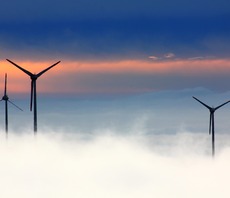IRENA: Global renewables capacity grows a record 9.6 per cent


Global renewables industry defies energy crisis to deliver a record 295GW of new capacity, but industry warned step change in deployment rates still required
Global renewable energy capacity grew by a record 9.6 per cent last year to 3,372GW, according to new figures from the International Renewable Energy Agency (IRENA) that confirm clean technologies continued to dominate the pipeline of new energy projects worldwide.
The agency’s Renewable Capacity Statistics 2023 report yesterday revealed that 295GW of renewable power capacity was brought online in 2022, accounting for 83 per cent of all new power capacity added last year.
The performance was driven by significant growth in Asia where 141GW of new capacity was added in China alone, helping to take Asia’s total renewables capacity to 1.63TW of capacity. .
Renewables capacity in Europe and North America grew by 57.3GW and 29.1GW, respectively, while Africa added 2.7GW of capacity, delivering a marginal year-on-year increase. Moreover, Oceania saw 5.2GW of new capacity come online and South America continued an upward trend with 18.2GW of capacity added.
Although hydropower continues to account for the largest share of total renewables capacity with 1,250GW, solar and wind continued to dominate new generating capacity. IRENA found that the technologies together contributed 90 per cent of all new renewable capacity in 2022, with the global solar market growing by 22 per cent and the wind energy market growing nine per cent.
Francesco La Camera, director general at IRENA, said the “continued record growth shows the resilience of renewable energy amidst the lingering energy crisis”.
“The strong business case of renewables coupled with enabling policies has sustained an upward trend of their share in the global energy mix year on year,” he added. “But annual additions of renewable power capacity must grow three times the current level by 2030, if we want to stay on a pathway limiting global warming to 1.5C.”
“As energy demand is expected to rise in many regions of the world, the energy transition requires a step-change that delivers a strategic shift beyond the decarbonization of the supply side. Any expansion of new non-renewables capacity in light of recent global events must be connected to efforts to accelerate the energy transition to make the system more resilient, inclusive and climate-proof.”
The latest figures from IRENA mirror recent updates on the UK energy market underscoring how renewables have helped to reduce reliance on imported fossil gas over the winter.
According to the ECIU, renewables overtook gas to become the biggest single source of power on the UK grid this winter, with power generated by wind, hydro and solar reaching a record 34TWh from 1 October 2022 to 13 January 2023.
Moreover, low carbon power sources made up over 60 per cent of Britain’s electricity over the entire winter period, saving consumers more than £15bn in energy costs by shielding them from expensive fossil gas imports, according to analysis from RenewableUK.








